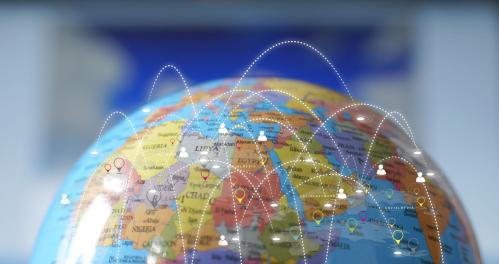The Korean War did not end when the armistice was signed on July 27, 1953. Only the shooting stopped. The effects of that war still stand in the way of a stable peace in Northeast Asia.
In Washington, on that same July day, those European countries that sent troops to the Korean War under the U.N. flag signed a joint declaration pledging that they would resist any new armed attack. That declaration is still legally valid and it serves as a reminder that any major military conflict or crisis in Korea would cause immediately serious consequences for the international system, not just Northeast Asia.
The involvement of the European Union in security issues in Northeast Asia is not likely or desirable at present. But the EU had an active role in the Korean Peninsula Energy Development Organization. KEDO supported the U.S.–North Korean agreement that froze North Korea’s plutonium production for several years.
The EU has been a major donor of humanitarian aid to North Korea. EU economic and humanitarian activity in the region already has contributed to peace and security and improved the lives of ordinary North Koreans. Much more can be done.
The visit to China of the North Korean leader, Kim Jong Il, high–lighted the overriding role of economics in the Northeast Asian equation. Integrating North Korea into the global economy would provide more effective leverage than isolating the country. But this process is unlikely to go very far except in the context of a broad political settlement in Korea.
It is unimaginable that a fully functioning peace regime could be put in place while the nuclear question is still unresolved. But definitively solving the nuclear problem in the absence of finally ending the Korean War also is unimaginable.
The two Koreas do not need to start from square one. The Basic Agreement, signed between them on Dec. 13, 1991, has all the elements of a peace system. It was never carried out because the nuclear crisis intervened but it remains on the books. Reviving and implementing the Basic Agreement, or its equivalent, in all its aspects would finally end the Korean War.
To make a peace regime enduring, it would have to be buttressed by the support of other nations. And here is where the EU should have a role. Formal acceptance of commitments undertaken by the two Koreas regarding levels and types of armaments, for example, may be needed. What clearly will be needed will be support for economic programs they may adopt.
Meanwhile, events are already changing the familiar landscape of the region and altering the environment within which the EU can exercise influence. Trade between North and South Korea surpassed $1 billion for the first time at the end of 2005. The joint North-South Korean industrial park in Gaesong, North Korea, is showing promising results.
Energy cooperation is high on the agenda for Northeast Asia. Less well known are the possibilities in transportation infrastructure. Two inter-Korean railway corridors are now waiting for the first test trains to cross the demilitarized zone, for the first time in half a century.
The EU supports the “Iron Silk Road” – – the initiative of former South Korean President Kim Dae Jung to connect the Korean peninsula to Europe through a Eurasian railway network. This initiative is expected to be on the agenda of the ASEM summit meeting of Asian and European political leaders in Helsinki during the Finnish EU Presidency in September 2006.
The project is moving closer to reality. A land bridge between Europe and Northeast Asia could have significant economic and geopolitical consequences. It would also underscore the need to settle the Korean War once and for all.
Finland introduced during its previous EU Presidency in 1999 the “Northern Dimension,” a cooperation program in the Baltic Sea and Arctic Sea regions also including parts of Russia. This year, a “Eurasian Dimension” would be in order. It could make a solid contribution to peace in Northeast Asia.


Commentary
Op-edLinking Europe and Northeast Asia
February 27, 2006